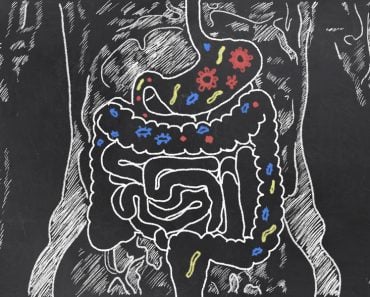Table of Contents (click to expand)
Have you ever found yourself feeling low and Googled ways to feel happy? The facial feedback hypothesis has come to your rescue!
While it may seem counterintuitive, the facial feedback hypothesis suggests that simply smiling can make you happier. In other words, it’s not just our emotions that shape our expressions… our expressions can also shape our emotions!
Recommended Video for you:
The Facial Feedback Hypothesis
Intuitively, we believe that emotions dictate our expressions. If we’re happy, we smile; if we’re sad, we frown; if we’re annoyed, we scowl. However, the facial feedback hypothesis challenges this one-way street. It suggests that our expressions can also influence our emotions. So, when you’re feeling sad, smiling can alter your mental frown and possibly flip it upside down!
How do we know this?
In 1988, psychologist Fritz Strack and colleagues conducted a revealing study to test the hypothesis. In their experiment, participants were made to rate the humor of cartoons while holding a pen in their mouths, either with their lips or with their teeth. This effectively forced them to either maintain a neutral expression or mimic a smile, respectively.
Participants who held the pen with their teeth, mimicking a smile, found the cartoons significantly funnier than those who held the pen with their lips, thus maintaining a neutral expression.

More recent evidence comes from a study conducted in 2010 by by psychologists at Columbia University. These researchers used a unique approach. Instead of a pen to activate facial muscles, the researchers used botox injections. Before they were given injections, the participants were shown a series of positive and negative videos. The participants were asked to rate their feelings on a scale that ranged from very negative to very positive. After this assessment, one group received botox injections, which paralyzes the facial muscles, limiting the muscles’ movement. The other group, the control group, received Restylane, a drug that only fills in wrinkles and does not affect muscle movements.
Between 14 to 24 days after the injections, the participants were once again shown positive and negative video clips (different ones, this time). After that, they were again asked to rate their emotional responses. The group that received Botox injections reported weaker emotional reactions to both types of video clips, as compared to the first time they had seen them. In other words, they experienced reduced negative emotions after viewing the negative clips and diminished positive emotions after viewing the positive ones.
Another study published in Psychological Bulletin in 2016 examined 138 studies on the facial feedback hypothesis. This study supported the idea that facial expressions can and do influence emotions. The researchers of this study concluded that adopting facial expressions associated with positive emotions, such as smiling, can indeed lead to an enhanced positive affect.
All of this tells us that the facial-feedback hypothesis is a research-backed phenomenon.
Why Does This Happen?
The facial feedback hypothesis operates through a feedback loop, where the physical act of smiling triggers positive emotions. This, in turn, reinforces the act of smiling.
One explanation for this is that when we smile, our brain triggers the release of neuropeptides called endorphins. These endorphins enable feelings of pleasure, and sometimes euphoria. Endorphins also reduce stress and pain, leading to being in a better mood.
Another way in which smiling helps us feel good is because it triggers the release of dopamine. Dopamine leads to feelings of reward and motivation, which also enhances our positive experience.

One thing to remember is that the relationship between smiling, endorphins, and dopamine is a complex area of research. There may be variations or relationships that are yet to be fully understood. The specific mechanisms and the extent to which smiling directly influences endorphin and dopamine release may be different among individuals and definitely requires further investigation.
Engaging In Activities That Disrupt Negative Emotions
Buddhist monk, often called the “father of mindfulness”, Thích Nhâ ́t Hanh said, “sometimes your smile can be the source of your joy.”
There are ways to put the facial feedback hypothesis to the test. One way is by doing activities that are directly opposite to what you’re feeling. For example, listening to your favorite upbeat songs or watching a comedy show can introduce elements of joy and laughter into your environment. These actions, though seemingly trivial, can send signals to your brain, helping you feel better. When you listen to your favorite songs or watch a comedy show, your brain receives a signal that things may not be that bad, since you are apparently comfortable and smiling! Smiling shifts your emotional state and creates an opportunity for positive emotions to take over.
Obviously, human emotions are complex, and simply smiling won’t magically cure you of what is hurting. Our nature is influenced by several factors, and it is essential for us to address and process our emotions. Plastering a smile on your face may not always work, or be necessarily healthy, but as a quick fix and a fascinating test of our mental flexibility, try letting your expressions determine your emotions for a while!
References (click to expand)
- Wagenmakers, E.-J., Beek, T., Dijkhoff, L., Gronau, Q. F., Acosta, A., Adams, R. B., Jr., … Zwaan, R. A. (2016, October 27). Registered Replication Report. Perspectives on Psychological Science. SAGE Publications.
- Strack, F., Martin, L. L., & Stepper, S. (1988). Inhibiting and facilitating conditions of the human smile: A nonobtrusive test of the facial feedback hypothesis. Journal of Personality and Social Psychology. American Psychological Association (APA).
- Davis, J. I., Senghas, A., Brandt, F., & Ochsner, K. N. (2010). The effects of BOTOX injections on emotional experience. Emotion. American Psychological Association (APA).
- Dfarhud, D., Malmir, M., & Khanahmadi, M. (2014). Happiness & Health: The Biological Factors- Systematic Review Article. Iranian journal of public health, 43(11), 1468–1477.












